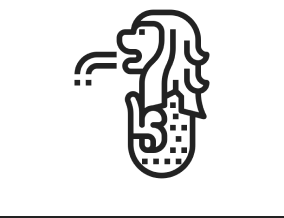As a crucial step in the SAP implementation process, gap analysis plays a vital role in ensuring a successful and efficient deployment of the Enterprise Resource Planning (ERP) system. In this blog, we will delve into the concept of gap analysis in SAP implementation, and its importance, and provide a step-by-step guide on how to conduct a gap analysis.
What is Gap Analysis in SAP Implementation?
Gap analysis is a systematic process used to identify the differences between the current state of an organization’s processes and the desired future state, as supported by the SAP system. It involves comparing the organization’s existing processes, policies, and procedures with the SAP system’s capabilities and best practices. The primary objective of gap analysis is to identify the gaps or discrepancies between the two states, which need to be addressed to ensure a smooth SAP implementation. This includes analyzing the organization’s current business processes, identifying areas for improvement, and determining how the SAP system can support those improvements.
Why is Gap Analysis Important in SAP Implementation?
Gap analysis is essential in SAP implementation for several reasons:
Ensures Alignment with Business Objectives: Gap analysis ensures that the SAP system is aligned with the organization’s business objectives, reducing the risk of process misalignment and potential errors. This alignment is critical to achieving the desired business outcomes and benefits from the SAP implementation.
Identifies Customization Needs: By identifying gaps, organizations can determine the level of customization required to meet their specific business needs. This ensures that the SAP system is tailored to meet the organization’s unique requirements, improving user adoption and overall system effectiveness.
Saves Time and Costs: Gap analysis helps to identify potential issues early on, reducing the risk of costly rework and delays during the implementation process. By identifying and addressing gaps upfront, organizations can avoid costly changes and rework later on.
Improves User Adoption: By ensuring that the SAP system is configured to meet the organization’s needs, gap analysis can improve user adoption and overall system effectiveness. When users are comfortable with the system and understand its capabilities, they are more likely to use it effectively and efficiently.
Step-by-Step Guide to Conducting a Gap Analysis in SAP Implementation
The following steps outline the process for conducting a gap analysis in SAP implementation:
Define Project Scope and Objectives: Clearly define the project scope, objectives, and timelines to ensure everyone involved is aware of the expectations. This includes identifying the specific business processes and functional areas to be analyzed, as well as the key performance indicators (KPIs) to be measured.
Document Current Processes: Document the organization’s current processes, policies, and procedures to understand the “as-is” state. This includes gathering information on the organization’s existing systems, data, and workflows, as well as identifying any existing pain points or areas for improvement.
Gather SAP System Information: Gather information about the SAP system’s capabilities, best practices, and industry-specific solutions to understand the “to-be” state. This includes reviewing SAP documentation, attending training sessions, and consulting with SAP experts.
Identify Gaps: Compare the current processes with the SAP system’s capabilities and identify gaps or discrepancies. This includes analyzing the organization’s current business processes and identifying areas where the SAP system can improve or support those processes.
Prioritize Gaps: Prioritize the identified gaps based on their impact, complexity, and feasibility. This includes evaluating the business value of each gap, the complexity of implementing a solution, and the feasibility of implementing a change.
Develop a Remediation Plan: Develop a plan to address the identified gaps, including customization, configuration, and training requirements. This includes outlining the specific steps needed to address each gap, the resources required, and the timeline for implementation.
Validate and Refine: Validate the remediation plan with stakeholders and refine it as necessary. This includes reviewing the plan with key stakeholders, gathering feedback, and making any necessary adjustments.
Tools and Techniques for Gap Analysis
Several tools and techniques can be used to facilitate the gap analysis process, including:
Business Process Modeling: Tools like BPMN (Business Process Model and Notation) can be used to model and analyze business processes. This helps to identify inefficiencies and areas for improvement.
Gap Analysis Templates: Pre-defined templates can be used to document and track gaps, such as spreadsheets or gap analysis worksheets. These templates help to ensure consistency and thoroughness in the gap analysis process.
SAP Solution Manager: SAP Solution Manager is a tool that provides a structured approach to gap analysis and requirements management. It helps to identify and document gaps, as well as develop a remediation plan.
Best Practices for Gap Analysis in SAP Implementation
To ensure a successful gap analysis, follow these best practices:
Involve Stakeholders: Engage stakeholders from various departments to ensure a comprehensive understanding of the organization’s processes and needs. This includes involving end-users, process owners, and IT personnel in the gap analysis process.
Use a Structured Approach: Use a structured approach to gap analysis, such as the one outlined above, to ensure consistency and thoroughness. This helps to ensure that all gaps are identified and addressed.
Document Everything: Document all findings, gaps, and remediation plans to ensure transparency and accountability. This includes maintaining a centralized repository of gap analysis documentation.
Prioritize and Focus: Prioritize gaps based on their impact and focus on the most critical ones first. This ensures that the most important gaps are addressed first, and resources are allocated effectively.
Conclusion
Gap analysis is a critical component of a successful SAP implementation. By identifying the gaps between an organization’s current processes and the desired future state, as supported by the SAP system, organizations can ensure a smooth and efficient deployment of the ERP system. By following the steps and best practices outlined in this blog, organizations can ensure that their SAP implementation is aligned with their business objectives, meets their specific needs, and is configured to support their unique requirements.






